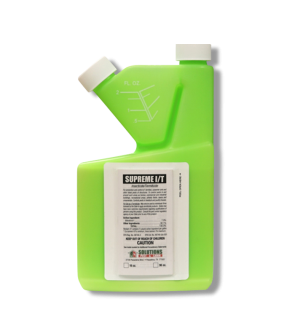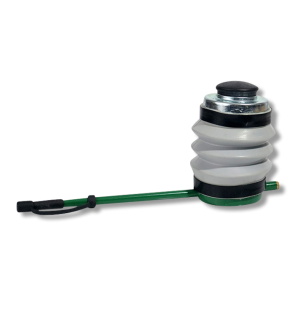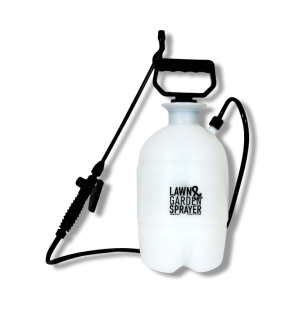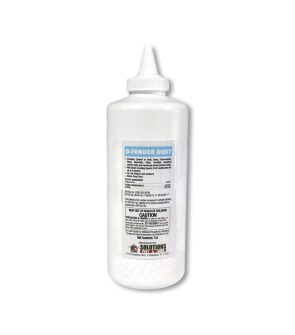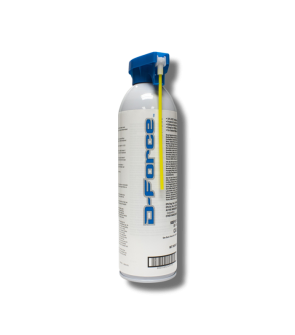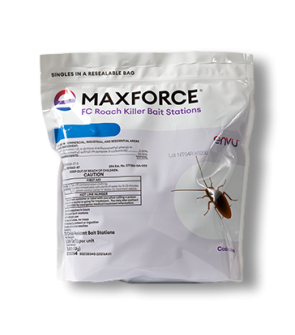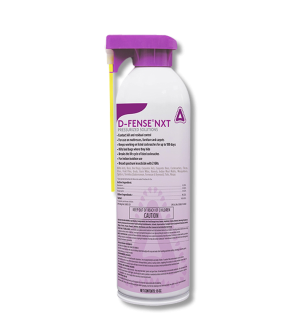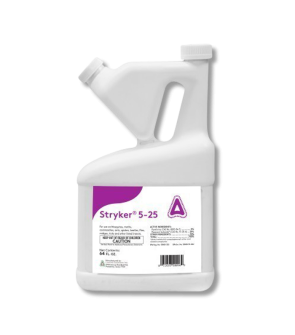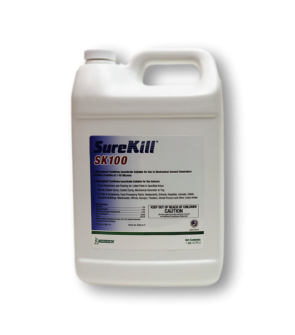Gain access to personalized product screening, the best pricing, rewards, and more!
Most Effective Products
Spider Beetle Control: How to Get Rid of Spider Beetles
This page is a general guide to removing spider beetles from your property. Using the products and methods suggested by our experienced pest control specialists, you will get control of spider beetles. Follow this DIY guide and use the recommended products, and we guarantee you 100% success in eliminating spider beetles.
There are several species of spiders in the United States, but a spider beetle is not a part of them. Spider beetles are generally 2 to 5 millimeters long and have an oval-shaped abdomen with 3 long legs protruding from both sides of their body. Though there are different species of spider beetles, each one will bear a similar resemblance to spiders or large mites due to their large abdomen and multiple legs.
Spider beetles are known to be a pantry pest and will be found anywhere where food is not properly secured, such as within your pantry or kitchen. They are not a common pest and usually will be brought into your home through contaminated groceries or food. Their diet is based on grains, so they prefer to be in areas containing grain products such as cereal, flour, or rice. Spider beetles are also known to infest old moldy products that contain moisture, providing an ideal environment to lay their eggs.
Spider beetles are not a dangerous species but can become numerous in a short amount of time. Homeowners are unaware of an infestation until populations become large since spider beetles are a relatively small species of insects and are only active at night.
If these pantry pests have become an issue in and around your home, our DIY guide can help. Follow the advice in our DIY spider beetle control guide to learn how to eliminate this infestation using the professional products and techniques provided.
Identification
Before you can proceed with a treatment program, you must be sure that the insect you are dealing with is a spider beetle. Careless identification can lead to using the wrong treatment products and waste your time and money. Below are some traits and facts about beetles to aid you with identification:

- Spider beetles are small, oval to round-shaped insects that closely resemble spiders due to their long legs and humped, shiny bodies. They typically range from 2 to 5 mm in length and depending on the species are reddish brown, black, pale yellow, or cream in color.
- From a topside view, the spider beetle's round-shaped body will be the first thing you see because its wing covers give them a humped-shaped appearance. Its head is orientated downwards, so it is not easily seen from above.
- Some species of spider beetles can fly, but not all. Specifically for the white-marked spider beetles: Females are flightless, while males possess wings and can fly.
- The spider beetle can be misidentified as a spider or large mite due to its unique appearance. However, a key physical difference is that spider beetles, like all beetles, have six legs and two antennae, while true spiders have eight legs and no antennae.
Use the description and image above to help you properly identify spider beetles on your property. If you are unsure, contact us; we will help you with the correct identification.
Inspection
After you have confirmed that you are dealing with spider beetles, you can inspect them to identify where they are active and what is drawing them to the area.

Where to Inspect
Indoors, look in storage areas close to the kitchen or in the kitchen itself. In the kitchen, look inside cabinets, shelves, pantries, drawers, and under the sink (where the plumbing penetrates the walls) or fridge, as spider beetles prefer dark and moist areas. Since spider beetles are nocturnal species, they can also be found within walls, attics, cracks, and crevices of your home.
Typically, spider beetles are found within your home, but it is not uncommon to find them outside since they can withstand temperatures below 50 degrees Fahrenheit. Search your shed or storage area where you store grain products such as bird seeds, pet food, or small seeds for planting or feed, and also damp, dark locations like underneath your porch. Spider beetles also infest a bird or rodent nest and areas containing bird feathers or rodent droppings.
What to Look For
You will look for signs of spider beetle activity, such as holes in packaging or food containers, webbing in food, silk cocoons, and sometimes leftover shed body parts or waists in food.
Treatment
Once you have confirmed spider beetle activity, it is time to begin treatment. Remember to read all product labels, follow the application instructions on these labels, and stay safe by wearing personal protective equipment (PPE).
To get rid of spider beetles, start by properly sanitizing your home to eliminate food and water sources that the beetles may have access to.
Step 1: Sanitize Your Home

Spider beetles are in your home because they want food, water, and shelter. If you remove these comforts, they may leave on their own.
Clean your home, particularly your kitchen. Wipe and sweep away crumbs and grease and take out the trash. Store all food, whether opened or new, in plastic containers. Remove any damaged or infested food products from your home.
Remove sources of water by keeping areas such as your kitchen sink dry and fixing any plumbing leaks so that there is no moisture around for spider beetles to enjoy.
Step 2: Spray Supreme IT Around and Inside Your Home
Once you’re done cleaning, start chemical control with Supreme IT.
Supreme IT is a broad-spectrum insecticide labeled for treating spider beetles. It has a long residual effect that continues to kill for up to 90 days after application.
To apply Supreme IT, simply mix it with water in a handheld pump or hose-end sprayer.
Add Supreme IT at a rate of 1 fl. oz. per gallon of water to cover 1,000 sq. ft.
Outdoors, broadcast your solution evenly over your lawn with a fan or cone spray pattern. Spray shrubbery and ornamentals from above and below to coat all leaf surfaces.
Spray all foliage to the point of wet but not runoff. Pests that make contact with the solution or treated areas will have their nervous systems impacted and die after several hours.
Conduct a perimeter application by spraying entry points like doors, windows, and other voids that insects can use to hide or invade. Then, spray your structure’s outer perimeter 3 feet up the foundation and at most 10 feet out.
Step 3: Apply D-Fender Dust to Crevices and Voids
Next, apply a residual product like D-Fender Dust.
D-Fender Dust is a waterproof insecticidal dust that comes in powder form. It is a synthetic pyrethroid and affects the nervous system of spider beetles. D-Fender Dust is great to apply in hard-to-reach voids and crevices where spider beetles will often hide.
This product’s application rate is 1 ounce per 125 square feet or half a pound per 1,000 square feet.
With a handheld dust applicator, treat deep into cracks, crevices, and voids. On proper application, no dust is visible from a normal perspective.
All utensils and surfaces in an area where food is processed should be covered before treatment and thoroughly washed before use.
Stick the duster’s spout into the area to be treated and lightly puff a fine, even layer of product. The amount of dust you output will depend on the force applied when you squeeze the duster and the position the duster is held in.
Prevention
Once you have successfully removed the spider beetle infestation, you must carry out preventative measures to ensure they do not return to your pantry or home. Here are some measures to take to ensure spider beetles do not reinfest again.
- Regularly check food packages before you buy them. While you inspect the packages, look for possible tears, holes, or punctures. Many times, this is how spider beetles enter your home. Also, get into the habit of storing food products in tight-fitting plastic containers. By doing this, you can prevent future infestations and isolate a possible infestation if your package is already contaminated.
- Regularly vacuum, mop, and clean dishes. Take out the garbage daily, and do not leave pet food and water bowls out in the open or overnight. Do your best to eliminate water sources around your property.
- Inspect your kitchen pantries regularly for pantry pests and remove all old or unused dried foods. Store any opened food packaging in airtight plastic containers or jars.
- Wipe and dry any moisture buildup around plumbing within your kitchen, such as where the faucet meets the wall or around your sink.
- Inspect the outside of your home for cracks, voids, wall gaps, or holes, and have them filled with caulk. This will help prevent spider beetles from infesting a bird or rat's nests, feathers, or droppings from entering your home.
- Apply Supreme IT around the perimeter of your home every three months to keep spider beetles away. This maintenance treatment will help prevent future infestations.
Key Takeaways
What are Spider Beetles?
- Spider beetles are an uncommon pantry pest that will quickly contaminate grain-based food products in your pantry and create a large infestation with their egg-laying.
How to Get Rid of Spider Beetles From Your Home
- To get rid of a spider beetle infestation, we recommend sanitizing your home and removing the source of the infestation. Spray Supreme IT inside and outside your home. Apply it around the perimeter to eliminate any possible outside infestations. Apply D-Fender Dust to treat voids, and crevices where spider beetles like to hide.
Preventing Spider Beetle Reinfestation
- Prevent future spider beetle Infestations by maintaining cleanliness around the home, sealing up points of entry, routinely checking pantries for damaged or old food, inspecting food products for any tears before purchase, and occasionally applying Supreme IT on the outside perimeter of your home.










